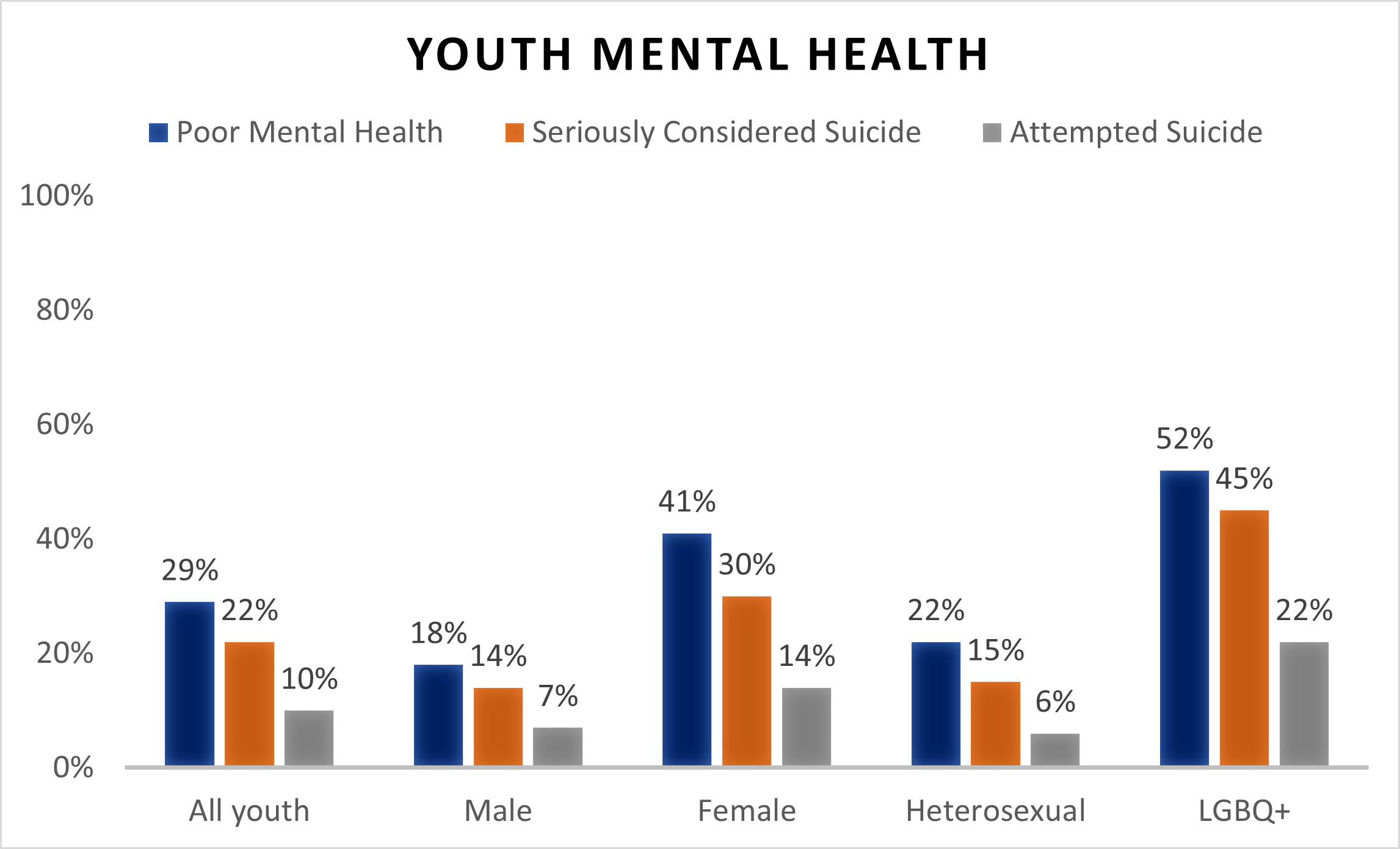Youth Are in Crisis and We Can Help
April 04, 2023 | Robin Matthies
 CDC recently released its 2011-2021 Youth Risk Behavior Survey (YRBS) results summarizing data from the past decade. The survey data showed some alarming trends in mental health conditions, especially for teen girls, LGBQ+ identified youth, and youth of color (Figure 1).
CDC recently released its 2011-2021 Youth Risk Behavior Survey (YRBS) results summarizing data from the past decade. The survey data showed some alarming trends in mental health conditions, especially for teen girls, LGBQ+ identified youth, and youth of color (Figure 1).
Such data can evoke feelings of helplessness, especially with mental health concerns trending in the wrong direction over the past 10 years for all young people, including a significant increase in teenage girls serious considering suicide (from 19% in 2011 to 30% in 2021) and Black youth experiencing persistent feelings of sadness or hopelessness (from 25% in 2011 to 39% in 2021).
Figure 1. Groups Most Disproportionately Impacted by Mental Health
 Centers for Disease Control and Prevention. 2021 Youth Risk Behavior Survey (YRBSS). Because the 2021 national YRBS did not have a question assessing gender identity, this report does not highlight data specifically on students who identify as transgender.
Centers for Disease Control and Prevention. 2021 Youth Risk Behavior Survey (YRBSS). Because the 2021 national YRBS did not have a question assessing gender identity, this report does not highlight data specifically on students who identify as transgender.
Less than 30% of youth struggling with severe depression receive consistent treatment. While rates were already trending in the wrong direction, social disruption and isolation experienced during the COVID-19 pandemic and school safety concerns—combined with other experiences of adversity and trauma—has continued to impact the mental health of young people.
Stigma remains a hurdle for young people to seek care, and impacts youth from all backgrounds regardless of age, race/ethnicity, gender, ability, or sexual orientation. That said, stigma can present differently and impact each of these populations uniquely, so it is important to also understand identity-based stigma as well.
There are many ways to help reduce the stigma associated with mental health conditions, both individually and as state and territorial health agencies, to better understand it and the impact it has on our youth who are struggling. Doing so can help reduce these concerning trends and support the most vulnerable youth and their families in seeking care.
Organizational strategies for state and territorial health agencies recommended by the U.S. Surgeon General include:
- Provide funding to implement and scale up evidence-based programs that promote healthy development, support children, youth, and their families, and increase their resilience. Many of these programs reduce risk factors and promote protective factors as ways to stop the intergenerational passage of adverse childhood experiences (ACEs).
- Educate the public about mental health and reducing stigma. Some states are using social media campaigns that address stigma and access to care such as the Colorado-based IMatter campaign or Springfield, Massachusetts’ “More than My Mood.” Other states are using successful campaigns that have already been developed, like Seize the Awkward.
- Elevate the voices of children, young people, and their families. Storytelling can be incredibly impactful. Creating a platform for youth and their families to share their personal stories about mental health can also be an effective strategy to help reduce stigma.
As caring people in our communities, the National Alliance on Mental Illness and the U.S. Surgeon General’s priorities for young people recommend the following:
- Talking openly about mental health.
- Being conscious of the language we use.
- Helping children and youth develop strong, safe, and stable relationships with supportive adults.
- Look out for warning signs of distress and seek help when needed.
Stigma continues to be one of many barriers for youth who are struggling with mental health conditions and suicidal ideation to seeking care. State and territorial health officials and other public health professionals can continue to research and develop resources, programs, and policies to help reduce stigma related to mental health and suicide.